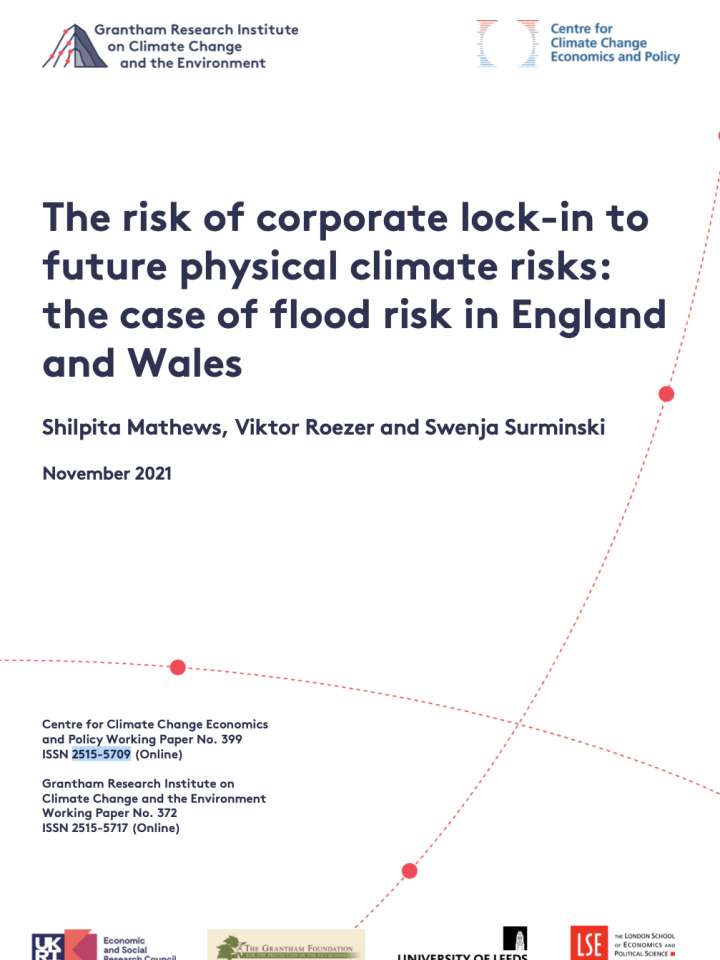The risk of corporate lock-in to future physical climate risks: the case of flood risk in England and Wales
The study looks at both the evidence and drivers of business lock-ins to physical risks from climate change, using the example of flood risk in England and Wales. The paper adopts a multi-methods approach consisting of a summary of the empirical evidence of lock-ins in the literature, a case study analysis of current and future flood risk of recently completed business premises in England and Wales and the results of a survey among business owners in the UK.
The findings show that business decisions made today, such as site selection or operational choices, can lock businesses to future risk trajectories that may be difficult and costly to change. Gaps between flood risk awareness and exposure in sectors such as manufacturing and finance were identified and attributed to low business capacity to understand site-level risk exposure and poor internal alignment between organisational actors. The results demonstrate that there is a business case for avoiding lock-ins today. Key points for decision-makers include:
- Many businesses, in particular small and medium sized enterprises (SMEs), lack the tools and information to assess and manage physical climate risks, while at the same time being disproportionately affected by them.
- So-called ‘lock-in’ effects are a particular concern. In the context of climate change, lock-ins refer to a type of ‘path dependency’ where business decisions made today determine climate risk levels now and in the future.
- Lock-ins can occur through choices about site location, infrastructure, supply chain networks or core business models, and due to low awareness of physical climate risks, poor quantification of the financial implications and inadequate corporate risk assessment.
Explore further
